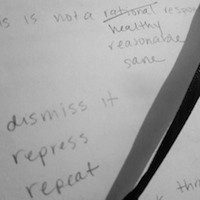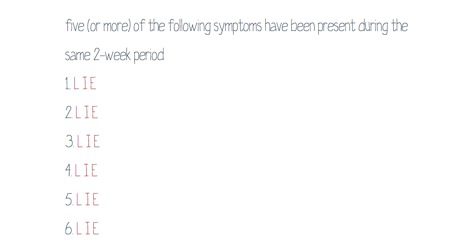Editor’s Note: Maddox Pratt’s anhedonia is an extraordinary work of Hypertext Literature. You can experience it here.
***
I have lived with, in, through depression for most of my life. As a child I was sad, I isolated myself, and I had a tendency toward self-harm. Both my parents worked to support the family, and I spent much of my time in after school programs or on my own. I struggled to connect with other children. Even when I was with others my age, I played alone. Depression is often marked by this type of absence—loss of pleasure, loss of energy, loss of meaning. It is frequently described as a type of nothingness, and while that nothingness is something, it can elude usual means of communication. My parents were not particularly inclined to diagnosis and pathologizing difference, but they were at a loss as to how to help me, and so at five years old I started therapy—weekly sessions in which the therapist would ask me questions over games of Uno while I held the cards close to my chest, not letting her in. I communicated my experience the only way I could as child, through closing up and silence.
When I was sixteen the bud that was my depression rose up in full bloom, accompanied by anxiety and hallucinations. I had panic attacks in classrooms—crawling under desks, shaking and grasping for breath. I was placed into treatment at a center for youth with mental illness. At the end of each school day of support groups, individual therapy, psychiatry appointments, and classroom lessons taught far below the high school level, most of the students returned to a group home where they continued their care; I rode a short bus to the public high school where my father worked.
My therapist was the one bright spot during this time. An intern completing her doctorate, she was resistant to labels and boxes, and helped me view my experiences as a response to living in a world that was less than welcoming of difference. She gave me stacks of books on feminist and queer theory, recognizing something I denied in myself, and pushing me intellectually. With her help, I began to learn how to continue to live with depression as a near constant companion, how to better manage it through the acceptance of it. I came to understand it as an important aspect of my life—accepting darkness so as to better see light.
Four years ago my depression went into remission and I believed that I was done with it, that I had somehow managed to heal, correct my thinking, and become a healthy and sane person. I went off my medication. I didn’t have health insurance, and I wanted to know what it would feel like to not be on antidepressants, to be free of the side effects I had been living with. Whether it was the antidepressants or my belief in them, something changed when I stopped taking them. I began breaking down in tears at home and in public, unable to pinpoint the trigger. I withdrew from social activities, nervous that I would start crying or anxiously shaking. I started thinking about suicide and I self-injured when I panicked, and then had to face the shame that resulted. I was living with a partner who was witnessing my distress, distress that I could not, but desperately wanted to, explain. I wanted to be understood, not only for my sake, but also for our life together, which felt threatened by this ongoing breakdown. Our life together was deeply important to me, though it has since ended. But at the same time that I loved this life I had with her, I was thinking about and wanting death. This paradox was something I struggled to explain.
I wrote the majority of anhedonia during an anxiety attack. I cannot say what led to the attack. Crying and shaking, I wrote in my small leather-bound notebook, “this is not a rational response.” I crossed out “rational” and replaced it with “healthy,” under which I wrote “reasonable,” and then “sane.” I filled a page with a repeated “tic” as frustration and hurt slowly eased through the act of writing. I listed the symptoms of depression as best I could remember them from the DSM-IV-TR. I followed this with another list of how I might describe my symptoms to a psychiatrist: “I feel empty and heavy at the same time. tears are always approaching…” I followed this with another list with the word “LIE” after each number. I had written a list that more closely represented my experience of these symptoms, and yet I still felt like it was not fully accurate, as though I was just conforming with the expectations of a profession that I am far too familiar with, having been in and out of therapy from a young age and going on to study psychology myself. I know how to describe my symptoms in order to be placed on antidepressants when needed. I know how to give just enough information to get medical help without fully exposing my reality.
I attempted to write what I would not say to a doctor. The symptom of insomnia became a string of numbers: glances at the clock throughout the night. “Psychomotor agitation” became a list of acts of self-harm: the release which my agitation finds, but which I fear sharing with a psychiatrist due to its association with borderline personality disorder and the accompanying stigma.
While anhedonia began in a notebook, it was intended from the start to be hypertext. All my hypertext work starts in a notebook with lines connecting passages, linked words underlined or bracketed. I had attempted to play someone else’s hypertext game on depression, and I found that I could not connect with the writing, the long blocks of text, the dramatically melancholic music. I wanted something that could express my own experience, something that would make the reader/player engage in ways that a plain text poem could not prompt. I am drawn to hypertext as a medium in part because I can play with the way the words appear and add images and sounds. I wanted words to disappear and repeat, mimicking my internal struggles with thought and language. Depression makes it more difficult for me to access and hold onto my thoughts; I wanted this to be something visually represented in the text, with lines and words fading into the white. The interaction of clicking on words feels emotionally different to me than the turning of a page. Text fades out with a click, it is no longer there waiting for you on the other side of a paper. By cycling text, I could mimic internal arguments and search for the “correct” word. All these choices are things that hypertext makes possible, particularly with the help of Leon Arnott, a programmer and game designer who has created macros for Twine which allow artists and writers to create more with their work even if they do not have a programming background.
I created drawings and simple animations to accompany some of the written passages. I kept the images flat and lacking detail, more childish than painterly. Most passages are simply text against a white background. Only one image differs in style: a passage about creating a ward against self-injury. In this passage I used a photograph of my legs showing scars from cutting myself and a homemade tattoo that I placed above them in an attempt to prevent further injury, my fumbling effort to transform an injurious act into one of creation.
scars from cutting myself and a homemade tattoo that I placed above them in an attempt to prevent further injury, my fumbling effort to transform an injurious act into one of creation.
Some passages are timed, forcing the reader to wait before clicking forward. I have a tendency when reading/playing hypertext games and poetry to quickly click through the passages. This can cause me to miss detail or emotional content that only comes from being with the text long enough for it to seep into my system. Knowing this, I wanted to make myself, and others, slow down when reading/playing anhedonia. This can be frustrating. There can be a desire to move forward, and it can be difficult to engage with something that is fighting this desire. Yet, discomfort, frustration, and anxiety are all aspects of the experience in question. If the choice for the reader/payer becomes be uncomfortable or quit, then something very fundamental to the struggles in my life has been conveyed: learn to stay with the anxiety and turmoil? Or quit?
anhedonia has been criticized for its lack of choice by some of those who interpret it as a game. There are no choices for you to make that lead to different outcomes. Replaying it will not yield different results. I didn’t want to create alternate endings in part because it’s an autobiographical piece, but the lack of choice was important for another reason: I did not wish to imply that depression was like a system, in which choices had clear consequences. Nor did I want people to play through a piece trying to get the “good” ending—a frequent response to hypertext pieces with more than one possible conclusion. There is no “good” or “bad” ending; the piece simply ends. There is no real conclusion, no epilogue, no reassurance for the reader that depression is treatable. Madness is not rational, clear, or (for me) comfortable, and I did not wish to force it into submission through the creation of a game-like system.
I have internalized years of shame and stigma and have learned to hide my struggles, much as one hides the scars that are the external evidence of them. In talking with friends about writing this piece, I have been told to stay silent, that I am risking not being hired for jobs by being open about my history. I think there is a fundamental paradox for me in my relationship with depression: there is the pull to withdraw, to cut off relationships, to isolate myself. Yet I also have a deep desire to speak about the experience, to reach out to others who may have similar dark corners which they visit. In each attempt to speak differently, maybe we get a little bit closer to some kind of compassionate understanding.







3 responses
To write and share this is just so meaningful. And, it took so much courage and thank you so much for your openness, the sense of humanity you conveyed and BTW you have absolutely nothing to be ashamed of. Au contrair, you are a guiding light…..God Speed and press on.
Maddox – please write write write write write. Reading this piece and experiencing your Anhedonia hypertext piece was moving / enlightening / helpful. Please continue to embrace brave and speak your truth so we can learn from you. You have much to share with the world. Write!
Noting your passage about knowing when and what to say to the doctor to get whichever med. Don’t they know we do this?
Click here to subscribe today and leave your comment.